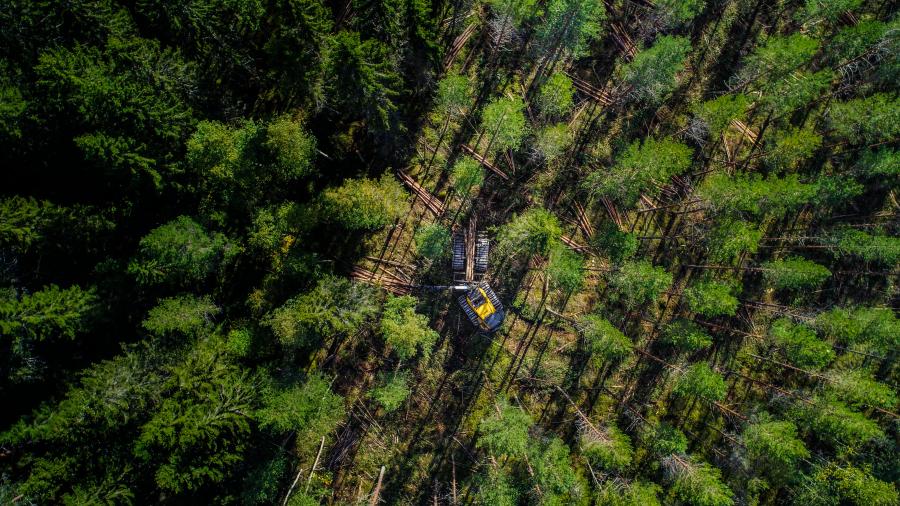
Thu November 04, 2021
Ponsse
Growing a productive forest requires hard work and commitment. Correctly timed thinning improves the forest's growth conditions and makes trees grow sturdier more quickly. Thinning supports forest biodiversity when part of the forest is always in the growth phase.
"Thinning can also be called improvement felling, as it ensures the productivity of the forest, and the high quality and health of trees," said Tuomo Moilanen, forest specialist at Ponsse.
"The better a forest grows, the better it sequesters carbon. Thinning ensures that trees can be processed into high-quality products that sequester carbon for dozens or even hundreds of years."
In cut-to-length (CTL) harvesting, trees are already processed up to the intended length in the forest, enabling thinning to be ecological. When the harvester operator plans trails so that they also can be driven by the forwarder, trees can be both felled and transported without needing to move around unnecessarily in the forest.
"At thinning sites, the distance between trails is roughly 20 metres, and trees remaining by the side of the trail will grow in Finnish conditions 20–25 percent more quickly, because they will have room to grow, both above and below," Moilanen said.
Ponsse's harvesters, forwarders and harvester heads also have been designed for thinning sites
The six-wheeled Ponsse Beaver and the eight-wheeled Ponsse Fox, Ponsse's harvesters in the smaller size category, are ideal solutions for first thinning. Ponsse Fox is an excellent choice, especially when operating in soft terrain, according to the manufacturer. High-flotation tracks should be selected as optional equipment for softer terrain to prevent surface damage.
At heavier thinning sites, the Ponsse Cobra and Scorpion harvesters, combined with the H5 or H6 harvester head, are the best choices in terms of productivity. In Ponsse Scorpion, the unobstructed visibility in all directions, together with cabin and crane levelling, makes working smooth even at dense thinning sites. As eight-wheeler machines, both models also are excellent in soft terrain.
While Elk and Wisent are the most popular Ponsse forwarders for thinning sites, Buffalo is also an excellent choice, especially when distances are longer, and the aim is to improve productivity. The forwarder can easily pick up trees from thinning sites when trails are properly protected (with branches) and as straight as possible; the fewer sharp bends there are, the less surface damage is caused.
At thinning sites, the harvester head should be selected according to the dominant tree species. However, it should be considered that damaged trees and other trees in poor condition must also be removed from thinning sites, calling for sawing and feed force from the harvester head. The harvester head must be reliable at thinning sites because a large number of trees are produced quickly during each shift.
At thinning sites, much rests on the forest machine operator — the operator decides what trees are removed and what are left standing. The forest owner hands over their assets to a professional forest machine operator to receive the highest possible profit, also in the future.
 Forestry Equipment
Forestry Equipment Articles
Articles Sign up for Updates
Sign up for Updates Sell Your Machines
Sell Your Machines

 Forestry Equipment
Forestry Equipment Forestry Dealers
Forestry Dealers Forestry Articles
Forestry Articles Sign up for Updates
Sign up for Updates Sell Your Machines
Sell Your Machines